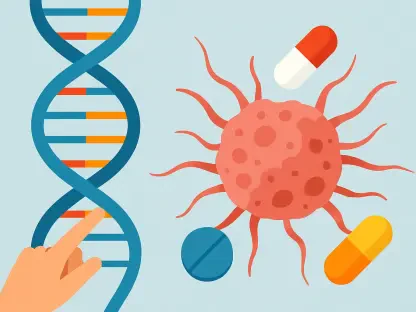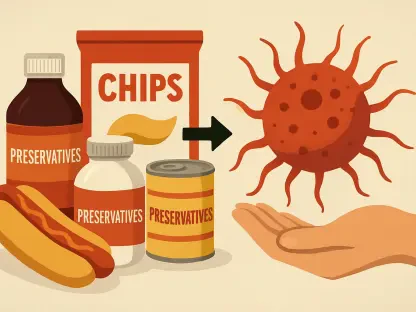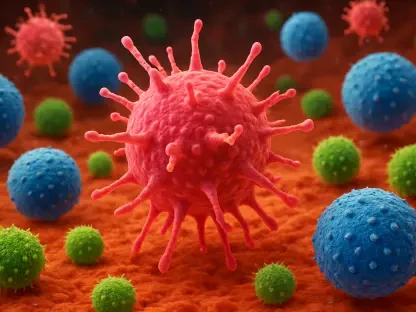In the ever-evolving landscape of cancer therapies, one of the most significant breakthroughs has been the use of monoclonal antibodies and immune checkpoint inhibitors (ICIs). These therapies aim to enhance the immune system’s ability to recognize and eliminate tumors. However, the effectiveness of these therapies can vary dramatically based on the underlying mechanisms, such as antibody-dependent cellular cytotoxicity (ADCC). By engaging the immune system to target and destroy tumor cells, ADCC plays a crucial role. This article explores the differences between strong and minimal ADCC activity, examining their implications for cancer treatment efficacy, immune cell preservation, and pharmacokinetics.
Understanding ADCC Activity
Antibody-dependent cellular cytotoxicity involves antibodies binding to target cells and engaging immune effector cells, which then destroy the target cells. This process is crucial in immune responses, particularly in identifying and eliminating infected or cancerous cells. ADCC is not only a natural defense mechanism but is also harnessed in various therapeutic interventions, especially those targeting cancer.
The significance of ADCC in immune responses cannot be overstated. It adds an additional mechanism for immune clearance when antibody engagement is insufficient. In cancer therapies, the ability to amplify this mechanism has led to the development of more potent treatment options. Specifically, monoclonal antibodies designed to enhance ADCC have shown promise in increasing the destruction of tumor cells.
Comparative Features of Strong vs. Minimal ADCC Activity
Impact on Tumor Growth Inhibition
Strong ADCC activity is expected to provide robust tumor control due to its enhanced ability to attack cancer cells. However, the real-world applications and effectiveness can vary. Recent studies have indicated that despite strong ADCC activity, some monoclonal antibodies do not significantly impact tumor growth. In the investigation comparing MIH6 and 10F.9G2 antibodies, MIH6, with minimal ADCC activity, proved more effective in inhibiting tumor growth than 10F.9G2, which displayed robust ADCC. These findings challenge preconceived notions that stronger ADCC correlates with improved outcomes, suggesting that other factors significantly influence efficacy.
Minimal ADCC activity, as demonstrated by MIH6, might offer a better alternative in certain contexts by limiting adverse effects on healthy tissues, thereby maximizing tumor-specific responses. This underscores the need for a nuanced understanding of ADCC’s role within therapeutic strategies, particularly in applications requiring precise immune modulation.
Influence on Immune Cell Preservation
Strong ADCC activity, while advantageous in some scenarios, can negatively impact essential immune cells such as CD8+ T cells. The 10F.9G2 antibody’s unintended destruction of these cells due to high ADCC illustrates a critical pitfall. As CD8+ T cells are vital for mounting an effective antitumor response, their loss can undermine treatment goals, leading to diminished efficacy.
By contrast, antibodies with minimal ADCC activity like MIH6 might better preserve immune cell populations, ensuring the maintenance of overall immune functionality. This distinguishes minimal ADCC applications as potentially offering safer, more controlled treatment avenues, reducing the risk of counterproductive immune responses.
Pharmacokinetics and Localization Efficiency
From a pharmacokinetic perspective, the efficiency of drug circulation and localization within the tumor microenvironment is paramount. Strong ADCC agents often exhibit varied binding and targeting efficiencies, which can either enhance or hinder therapeutic reach. The MIH6 antibody, despite its minimal ADCC capacity, successfully inhibited tumor growth, raising questions about the assumptions regarding ADCC strength and drug localization efficiencies.
Comparatively, minimal ADCC activity can sometimes result in better pharmacokinetic profiles, as seen with MIH6. It emphasizes efficient drug targeting capabilities necessary for optimizing tumor cell engagement without unnecessary systemic exposure.
Challenges and Considerations in ADCC Activity
Therapies relying on ADCC face several challenges, particularly in the form of unintended cellular effects that can compromise treatment success. The unpredictability associated with strong ADCC activity necessitates rigorous evaluation to mitigate risks such as collateral damage to healthy cells and tissues.
Ethical considerations also play a role in the application of ADCC in therapies. Ensuring patient safety while maximizing therapeutic benefits requires a delicate balance. Technically, designing drugs to harness ADCC benefits without triggering adverse effects presents ongoing obstacles in biotechnology and pharmacology.
Conclusion and Recommendations
The exploration of strong versus minimal ADCC activity in therapeutic contexts reveals a complex interplay of benefits and challenges. While strong ADCC activity suggests greater potential for tumor eradication, it poses risks to immune system integrity and therapeutic precision. Conversely, minimal ADCC provides a more conservative approach, safeguarding immune cell populations and exhibiting favorable pharmacokinetics.
Future research should focus on tailoring ADCC activity according to patient-specific needs, with attention to the molecular characteristics of cancer cases. Efforts to refine monoclonal antibodies for optimal ADCC levels could enhance the therapeutic index, striking a balance between efficacy and safety. The development of engineered antibodies with controlled ADCC responses holds the promise to revolutionize cancer treatments, underscoring the importance of personalized medicine in achieving optimal patient outcomes.









